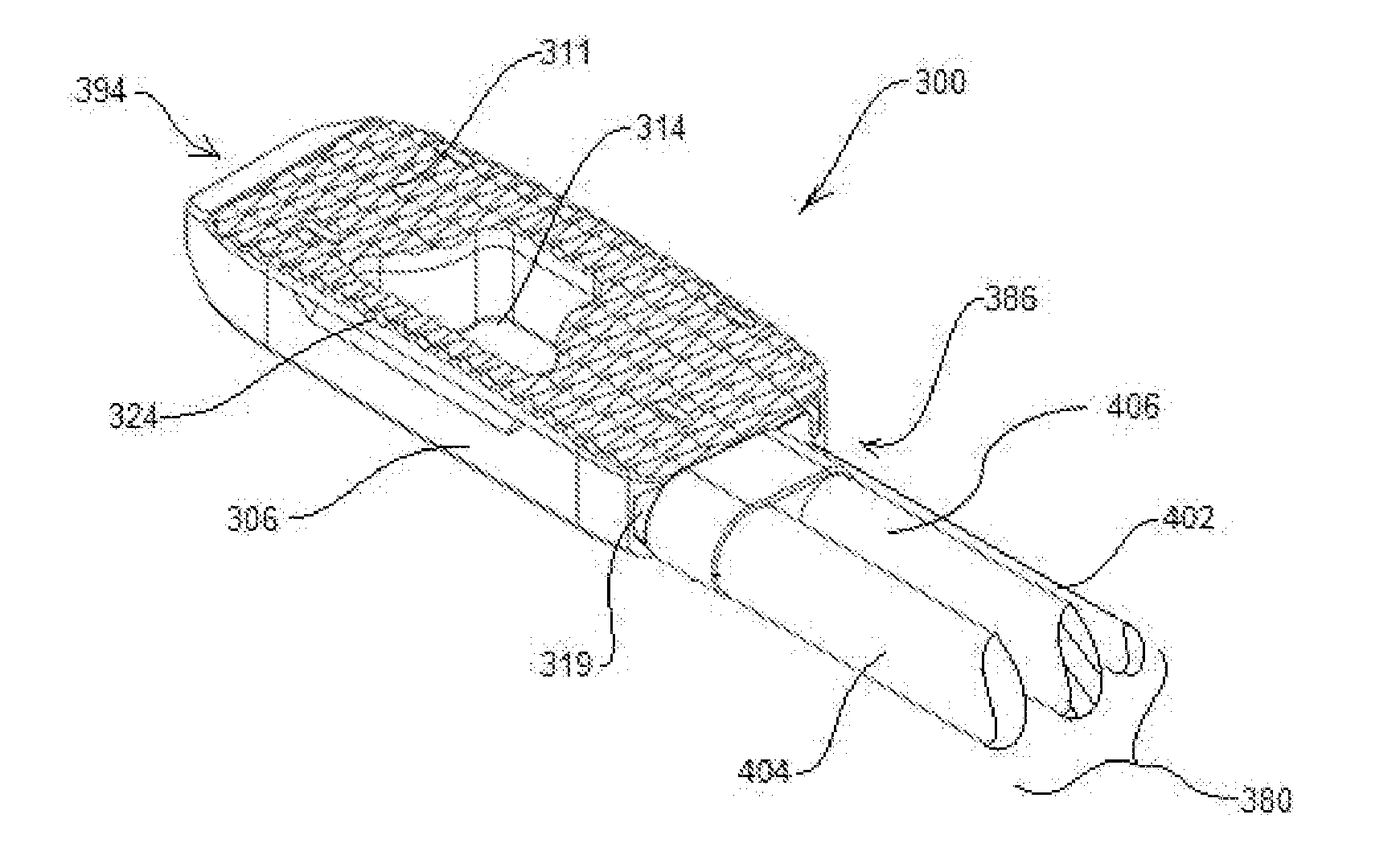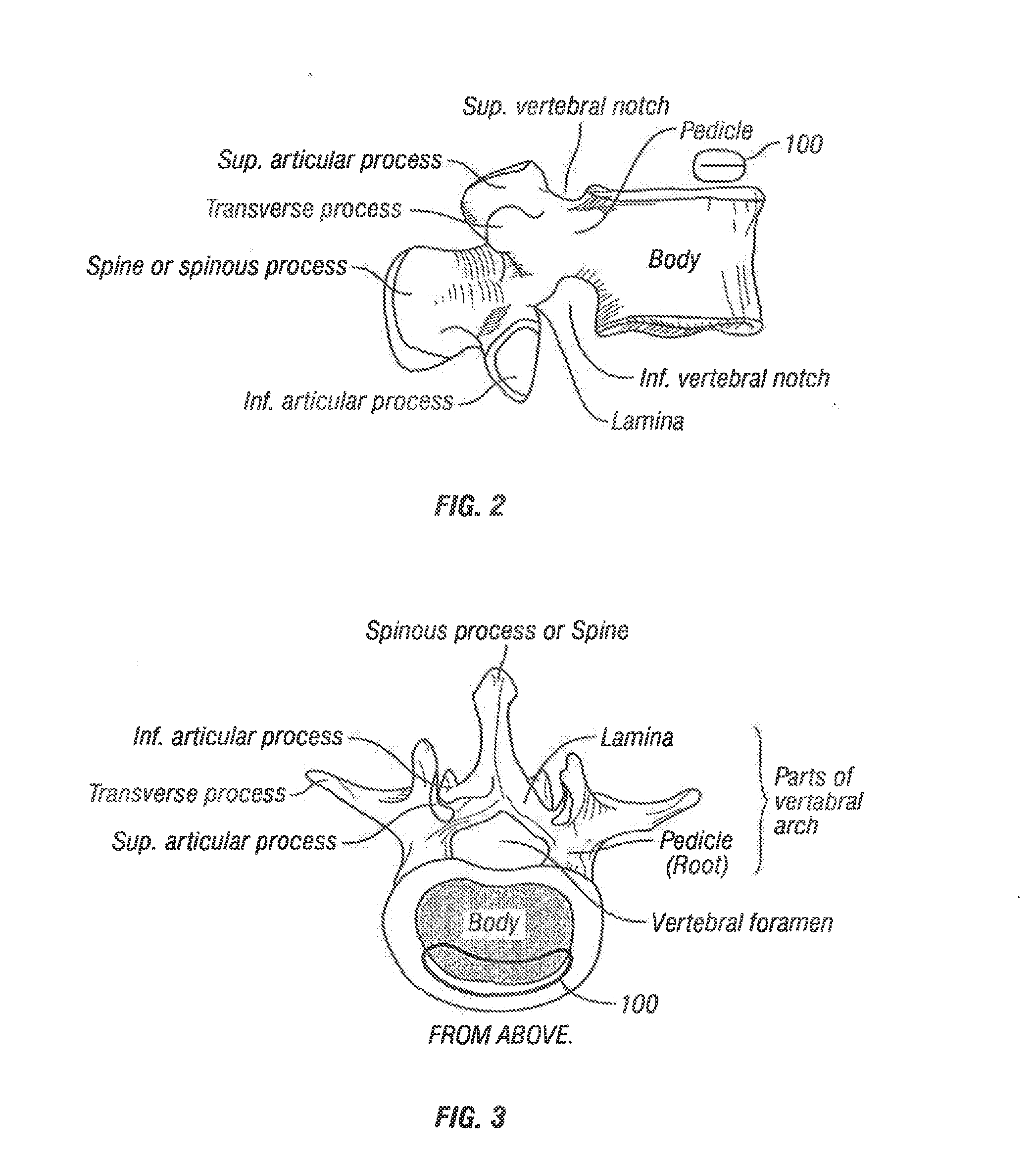Selectively Expanding Spine Cage With Enhanced Bone Graft Infusion
a spine cage and bone graft technology, applied in the field of spinal cage enhancement with bone graft infusion, can solve the problems of inability to expand and distract the endplates, existing static cages do not reliably improve the space for neural elements, and the limitations of existing devices for interbody stabilization are important and significant limitations
- Summary
- Abstract
- Description
- Claims
- Application Information
AI Technical Summary
Benefits of technology
Problems solved by technology
Method used
Image
Examples
Embodiment Construction
[0048]Referring to FIG. 1, vertebral segments or end plates are shown with an average 8 mm gap representing an average intervertebral space. A complete discectomy is performed prior to the insertion of the SEC 100. The intervertebral disc occupying space 102 is removed using standard techniques including rongeur, curettage, and endplate preparation to bleeding subcondral bone. The posterior longitudinal ligament is divided to permit expansion of the intervertebral space.
[0049]The intervertebral space 102 is distracted to about 10 mm using a rotating spatula (Not shown. This is a well-known device that looks like a wide screw driver that can be placed into the disc space horizontally and turned 90 degrees to separate the endplates).
[0050]The SEC is inserted posteriorly (in the direction of arrow 102 between the no. 4 and 5 lumbar vertebrae as shown in FIG. 1 (lateral view) or into any selected intervertebral space. In accordance with an aspect of the invention, the SEC is reduced to ...
PUM
| Property | Measurement | Unit |
|---|---|---|
| size | aaaaa | aaaaa |
| correction angle | aaaaa | aaaaa |
| anterior/posterior angle | aaaaa | aaaaa |
Abstract
Description
Claims
Application Information
 Login to View More
Login to View More - R&D
- Intellectual Property
- Life Sciences
- Materials
- Tech Scout
- Unparalleled Data Quality
- Higher Quality Content
- 60% Fewer Hallucinations
Browse by: Latest US Patents, China's latest patents, Technical Efficacy Thesaurus, Application Domain, Technology Topic, Popular Technical Reports.
© 2025 PatSnap. All rights reserved.Legal|Privacy policy|Modern Slavery Act Transparency Statement|Sitemap|About US| Contact US: help@patsnap.com



